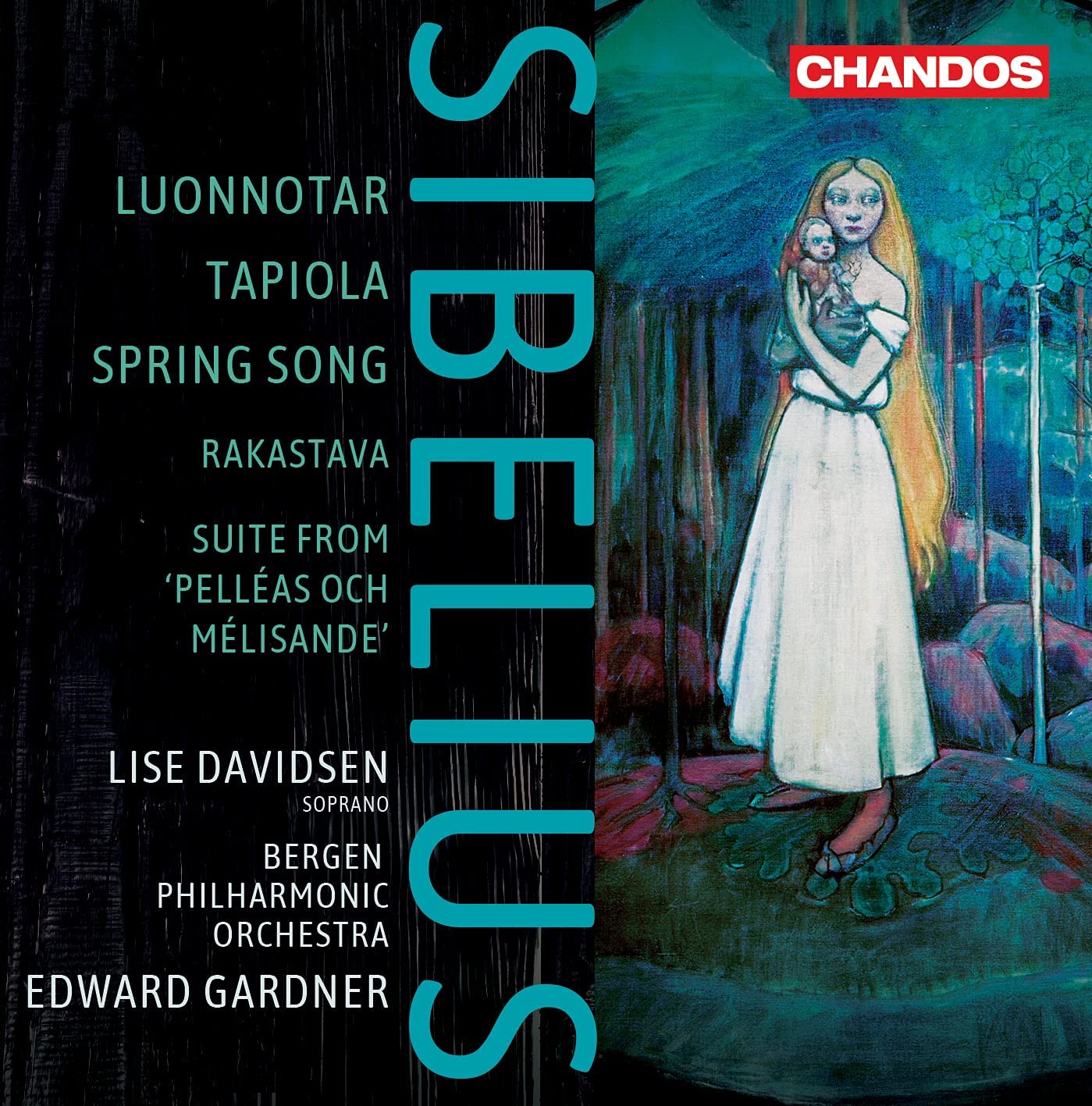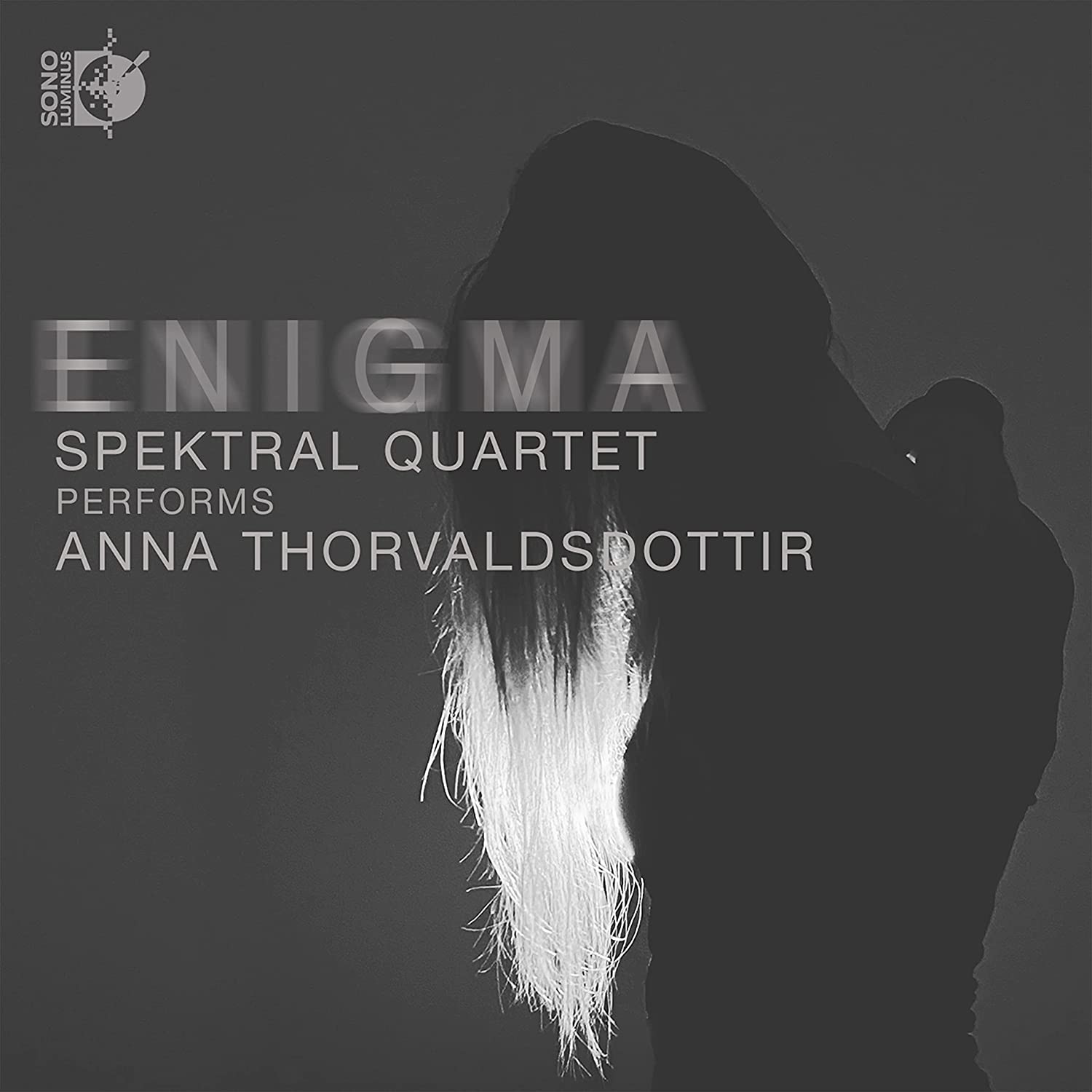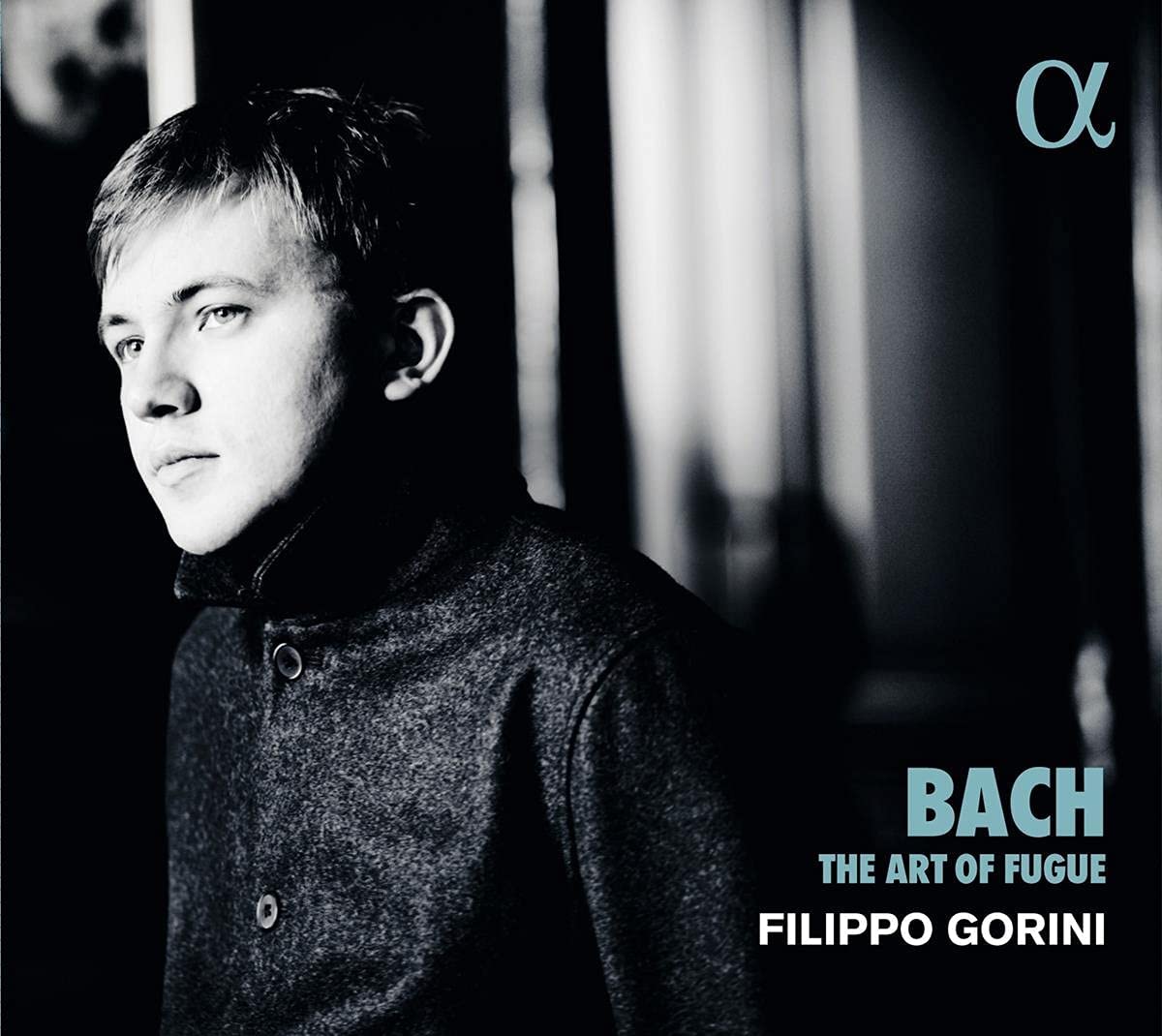Classical CDs: Star sopranos, forest spirits and a Mexican funeral march | reviews, news & interviews
Classical CDs: Star sopranos, forest spirits and a Mexican funeral march
Classical CDs: Star sopranos, forest spirits and a Mexican funeral march
A debut disc from a young German soprano, an ear-stretching Icelandic string quartet and two collections of nonets


Die stille Stadt: Songs by Alma Mahler, Franz Schreker and Erich Wolfgang Korngold Dorothea Herbert (soprano), Peter Nilsson (piano) (7 Mountain Records)
German dramatic soprano Dorothea Herbert will be playing Leonore in a new Glyndebourne Touring Opera production of Fidelio in October. Her debut album provides a welcome excuse to go back to Vienna and re-visit some Lieder from the cusp of the 20th century. Pianist is Chicago-born, Netherlands-based Peter Nilsson, and the album has been beautifully recorded at former radio studios in Hilversum. There’s another timely ‘hook’: the recent “Ohne Kunst und Kultur wird's still” (without art and culture it gets quiet) campaign in Germany finds a thematic echo in the choice of Alma Mahler’s song “Die Stille Stadt”, the album opener, and in Korngold’s “Welt ist stille eingeschlafen”, the last song (there is also an aria from Die tote Stadt). Perhaps as a reflection of this, the songs are on the more reflective side with a distinct preference for slower tempi.
A case in point is Schreker’s little vignette, “Spuk” (ghostly apparition). Other performances on record make much more of the vivid way in which “Mondgeflimmer” (shimmering moonlight) is reflected in the flickering piano writing, or show more desire to be swept of their feet by the song’s eerie stop-go waltz. Herbert and Nilsson’s reading, by contrast, is more detached and contemplative. The most appealing of the Schreker songs, a discovery for me, is “Traum”, for which Wagner’s Siegfried leitmotif seems to have spent some quality time with Richard Strauss’s “Wie sollten wir geheim sie halten”. If you need deep gloom, then Schreker’s “Die Dunkelheit sinkt schwer wie Blei” (darkness sinks heavy as lead) to a text by Edith Ronsperger is hang-dog depressive, and Herbert does it well. It is from 1909, making it a near contemporary of Schoenberg’s Das Buch der hängenden Gärten, bearing witness in a similar way to the expressive power of the breakdown of tonality. Fischer-Dieskau and Aribert Reimann stopped off to visit poet Edith Ronsperger’s deep despair for 2 ½ minutes in their whistle-stop survey of German Lieder from 1850-1950. You want it darker, as Leonard Cohen once asked. Herbert and Nilsson choose to spend virtually a full minute longer in this very bleak place.
Herbert makes the case well for Alma Mahler’s persuasive gift as songwriter for clear melody, especially in a lovely performance of “Kennst du meine Nächte” to a poem by Leo Greiner. One starts to ask if the sad fact can really be true, that Alma Mahler destroyed all but seventeen of her songs? Korngold’s writing for the voice is particularly demanding, as if he wants to make sure that lesser mortals steer clear of it. There are complex phrase-shapes to negotiate, and an evenness of vocal production throughout the vocal range is a distinct asset. His songs have been well-served on disc, notably by Anne Sofie von Otter and Angelika Kirschschlager (her debut album from 1996 is an evergreen delight). Dorothea Herbert, then, is up against tough competition, and the slower tempi don’t help. In “Welt ist stille eingeschlafen”, the final evanescent echo of ‘im Traum’, marked pianissimo comes after the dynamics have been progressively taken down notch by notch. All the interest at this point should surely be in the piano’s final re-statement of its five-beat ear-worm (marked just single p). For my ears, Herbert and her expansive vibrato are too loud and strident here. A variable but nonetheless worthwhile album.
Sebastian Scotney
 Sibelius: Luonnotar, Tapiola, Spring Song Lise Davidsen (soprano), Bergen Philharmonic Orchestra/Edward Gardner (Chandos)
Sibelius: Luonnotar, Tapiola, Spring Song Lise Davidsen (soprano), Bergen Philharmonic Orchestra/Edward Gardner (Chandos)
Luonnotar and Tapiola are two big Sibelius works that aren’t played enough. Luonnotar because it’s so hard to find a soprano who can really do it justice, and Tapiola because it’s, well, proper scary and can terrify audiences. I attended a Leeds performance a while back and can still recall the muted applause and frowns on audience members’ faces. Their loss. Edward Gardner’s Bergen Philharmonic Tapiola is excellent: expansive and atmospheric, if lacking the edge that Paavo Berglund brought to the score. Gardener does bring out the harmonic boldness and sheer strangeness of the work. He’s superb in the latter stages, with a powerful storm sequence and luminous closing chord, as final-sounding as that at the end of the 7th Symphony. Luonnotar is wonderfully sung here by Lise Davidsen, her stratospheric soft high notes immaculate. Follow with the text, and you’ll shiver at her “Oh Ukko, supreme god!/Come hither, hear my call,” over Sibelius’s rocking accompaniment. As in Tapiola, Gardner and his players know exactly when to let rip. If you don’t know either piece well, start here.
There’s plenty more. It’s good to hear the full Pelléas och Mélisande suite, with Davidsen singing “The Three Blind Sisters” and the Bergen strings rich and imposing in “At the Castle Gate”, barely two minutes of music which feel so much bigger and grander. The little suite from Rakastava is gorgeously played, and there’s also Sibelius’s attractive if underwhelming Spring Song, unfairly dismissed by Mahler in 1907 as “the usual kitsch”. He was very wrong; it’s much better than that. Spectacular Chandos sound is another bonus; it would be good to have a Sibelius symphony cycle from this team.
 Enigma – Spektral Quartet performs Anna Thorvaldsdottir (Sono Luminus)
Enigma – Spektral Quartet performs Anna Thorvaldsdottir (Sono Luminus)
There are passages in Enigma when you can’t believe that the sounds you’re hearing are being produced by acoustic instruments. Then there’s a question of scale. Surely this music is being played by a string orchestra? But no, Icelandic composer Anna Thorvaldsdottir’s three-movement Enigma is a string quartet. A glimpse at the score is fascinating; being able to seeing how this music is notated, every col legno tap and descending glissando painstakingly notated. Knowing how the effects are achieved doesn’t diminish Enigma’s magic one jot. You’re bowled over by Thorvaldsdottir’s imagination, and by the playing of Chicago’s Spektral Quartet, who gave the first performance.
Engima straddles opposing poles, the crepuscular scrapes and shudders at odds with sequences of slow-moving sonorous chords. What, if anything, this work is ‘about’ is left to us to imagine. I’ve listened to it on multiple occasions, with and without the sheet music, and I’m still finding new details to marvel at: high pitch violin slides resemble birdcalls and the very end of the last section sounds like a living entity shuffling into sleep, the breathing ever calmer and softer. A terrific disc, and one of the best contemporary releases of the year. Predictably well-engineered and nicely designed, Sono Luminus’s packaging includes an interesting booklet note from violist Doyle Armbrust, and, tucked away in the acknowledgements is a ‘thank you’ to Dr Anthony Fauci. Unmissable.
 Bach: The Art of Fugue Filippo Gorini (Alpha Classics)
Bach: The Art of Fugue Filippo Gorini (Alpha Classics)
Pianist Filippo Gorini’s response to Bach’s The Art of Fugue deserves credit for ambition alone, this imposing unfinished work the starting point for poetry, documentaries and films, all of which will be released on the pianist’s website over the coming months. As Covid-related projects go, it’s impressive, the seriousness of Gorini’s endeavour wholly befitting what can seem a cerebral intimidating work. Gorini’s playing is lyrical and warm, the expansive tempi giving the music space to breathe. The “Canon alla Ottava” feels unusually dance-like, a bracing release of tension after the four fugues which precede it. He excels in contrasts: “Contrapunctus VI” is all poise and elegance, the fugue that follows it a study in quiet introspection.
97 minutes of D minor can become oppressive, but this performance is never dull. There’s a palpable sense of discovery. Gorini gives each fugue personality. His “Fuga a 3 soggetti” is terrific, played unfinished as Bach left it, the sudden finish as surprising as ever. We’re left wanting to find out more. Look online: the booklet, and the associated website, gives us Gorini’s TS Eliot-inspired set of preludes and haikus inspired by the music, with annotations to follow. Alpha Classics’s recorded sound is warm and rich.
 Oxalys: Noneto – music by Rota, Martinů and Eisler (Passacaille)
Oxalys: Noneto – music by Rota, Martinů and Eisler (Passacaille)
Intercontinental Ensemble: In Motu (TRPTK)
If you were decluttering your CD shelves, you’d hang onto any disc containing Martinů’s little Nonet No. 2. In the words of Marie Kondo, this piece definitely “sparks joy”. I’ve loved it for decades, ever since hearing the Nash Ensemble’s Hyperion version, and having two new recordings appear simultaneously, each well-played and with interesting couplings and attractive sleeve art is something to celebrate. This is Martinů’s final chamber work, written in 1959 for the Czech Nonet and an affectionate glance back at Martinů’s musical roots. It feels incredibly youthful, an upbeat, unprentious delight which lasts around 16 minutes. Check out the first movement’s perky intro, and you'll be smitten. There’s a touch of bittersweet introspection in the slow movement, but the finale is a romp. It's wonderful. I'd hate to have to choose between either of these new recordings, so I'd suggest buying the pair. That by Belgium’s Oxalys is fractionally swifter and sharper edged, with glorious bassoon solos from Pieter Nuytten. Amsterdam’s Intercontinental Ensemble are a touch warmer and more relaxed, the individual voices more smoothly blended.
 Both discs include the rarely-heard Nonet by Nino Rota – another treat, more obviously virtuosic and with a laugh-out-loud finale. Oxalys also have the even more obscure Nonet No. 2 by Eisler, intriguingly scored for an ensemble including bass, trumpet and percussion, and related to the music Eisler composed for a John Steinbeck-scripted documentary about an indigenous village in Mexico. It’s echt-Eisler: pungent, pithy and oddly catchy, ending with a sinister high-octane funeral march. The Intercontinentals offer an effervescent arrangement of Mendelssohn’s Symphony No. 4 (presumably a collaborative effort), which works wonderfully, the closing tarantella full of punch. Each release is very well recorded and appealingly designed, though the strikingly packaged TRPTK one may require a separate shelf.
Both discs include the rarely-heard Nonet by Nino Rota – another treat, more obviously virtuosic and with a laugh-out-loud finale. Oxalys also have the even more obscure Nonet No. 2 by Eisler, intriguingly scored for an ensemble including bass, trumpet and percussion, and related to the music Eisler composed for a John Steinbeck-scripted documentary about an indigenous village in Mexico. It’s echt-Eisler: pungent, pithy and oddly catchy, ending with a sinister high-octane funeral march. The Intercontinentals offer an effervescent arrangement of Mendelssohn’s Symphony No. 4 (presumably a collaborative effort), which works wonderfully, the closing tarantella full of punch. Each release is very well recorded and appealingly designed, though the strikingly packaged TRPTK one may require a separate shelf.
Explore topics
Share this article
The future of Arts Journalism
You can stop theartsdesk.com closing!
We urgently need financing to survive. Our fundraising drive has thus far raised £49,000 but we need to reach £100,000 or we will be forced to close. Please contribute here: https://gofund.me/c3f6033d
And if you can forward this information to anyone who might assist, we’d be grateful.

Subscribe to theartsdesk.com
Thank you for continuing to read our work on theartsdesk.com. For unlimited access to every article in its entirety, including our archive of more than 15,000 pieces, we're asking for £5 per month or £40 per year. We feel it's a very good deal, and hope you do too.
To take a subscription now simply click here.
And if you're looking for that extra gift for a friend or family member, why not treat them to a theartsdesk.com gift subscription?
more Classical music
 Bizet in 150th anniversary year: rich and rare French offerings from Palazzetto Bru Zane
Specialists in French romantic music unveil a treasure trove both live and on disc
Bizet in 150th anniversary year: rich and rare French offerings from Palazzetto Bru Zane
Specialists in French romantic music unveil a treasure trove both live and on disc
 Scottish Chamber Orchestra, Ibragimova, Queen’s Hall, Edinburgh review - rarities, novelties and drumrolls
A pity the SCO didn't pick a better showcase for a shining guest artist
Scottish Chamber Orchestra, Ibragimova, Queen’s Hall, Edinburgh review - rarities, novelties and drumrolls
A pity the SCO didn't pick a better showcase for a shining guest artist
 Kilsby, Parkes, Sinfonia of London, Wilson, Barbican review - string things zing and sing in expert hands
British masterpieces for strings plus other-worldly tenor and horn - and a muscular rarity
Kilsby, Parkes, Sinfonia of London, Wilson, Barbican review - string things zing and sing in expert hands
British masterpieces for strings plus other-worldly tenor and horn - and a muscular rarity
 From Historical to Hip-Hop, Classically Black Music Festival, Kings Place review - a cluster of impressive stars for the future
From quasi-Mozartian elegance to the gritty humour of a kitchen inspection
From Historical to Hip-Hop, Classically Black Music Festival, Kings Place review - a cluster of impressive stars for the future
From quasi-Mozartian elegance to the gritty humour of a kitchen inspection
 Shibe, LSO, Adès, Barbican review - gaudy and glorious new music alongside serene Sibelius
Adès’s passion makes persuasive case for the music he loves, both new and old
Shibe, LSO, Adès, Barbican review - gaudy and glorious new music alongside serene Sibelius
Adès’s passion makes persuasive case for the music he loves, both new and old
 Anja Mittermüller, Richard Fu, Wigmore Hall review - a glorious hall debut
The Austrian mezzo shines - at the age of 22
Anja Mittermüller, Richard Fu, Wigmore Hall review - a glorious hall debut
The Austrian mezzo shines - at the age of 22
 First Person: clarinettist Oliver Pashley on the new horizons of The Hermes Experiment's latest album
Compositions by members of this unusual quartet feature for the first time
First Person: clarinettist Oliver Pashley on the new horizons of The Hermes Experiment's latest album
Compositions by members of this unusual quartet feature for the first time
 Gesualdo Passione, Les Arts Florissants, Amala Dior Company, Barbican review - inspired collaboration excavates the music's humanity
At times it was like watching an anarchic religious procession
Gesualdo Passione, Les Arts Florissants, Amala Dior Company, Barbican review - inspired collaboration excavates the music's humanity
At times it was like watching an anarchic religious procession
 Classical CDs: Camels, concrete and cabaret
An influential American composer's 90th birthday box, plus British piano concertos and a father-and-son duo
Classical CDs: Camels, concrete and cabaret
An influential American composer's 90th birthday box, plus British piano concertos and a father-and-son duo
 Cockerham, Manchester Camerata, Sheen, Martin Harris Centre, Manchester review - re-enacting the dawn of modernism
Two UK premieres added to three miniatures from a seminal event of January 1914
Cockerham, Manchester Camerata, Sheen, Martin Harris Centre, Manchester review - re-enacting the dawn of modernism
Two UK premieres added to three miniatures from a seminal event of January 1914
 Kempf, Brno Philharmonic, Davies, Bridgewater Hall, Manchester review - European tradition meets American jazz
Bouncing Czechs enjoy their Gershwin and Brubeck alongside Janáček and Dvořák
Kempf, Brno Philharmonic, Davies, Bridgewater Hall, Manchester review - European tradition meets American jazz
Bouncing Czechs enjoy their Gershwin and Brubeck alongside Janáček and Dvořák
 Solomon, OAE, Butt, QEH review - daft Biblical whitewashing with great choruses
Even a top soprano and mezzo can’t make this Handel paean wholly convincing
Solomon, OAE, Butt, QEH review - daft Biblical whitewashing with great choruses
Even a top soprano and mezzo can’t make this Handel paean wholly convincing

Add comment